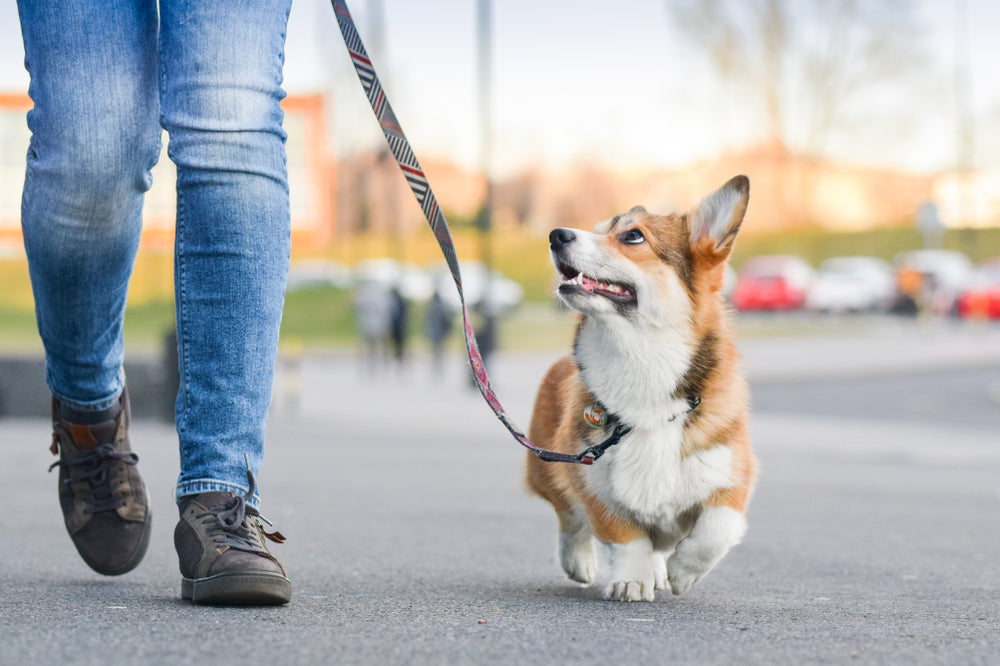4min Read
How to Train a Puppy With Positive Reinforcement
Puppies can be a lot of work. There's so much to teach your new pup: where to potty (not on the carpet!), how to come when called, good manners, and many commands that will help keep her safe. Right now, that might sound far-fetched, but it's not impossible — so stay positive!
Here's how to train a puppy with positive reinforcement so she can grow up to be a good dog.
What Is Positive Reinforcement Training?
Positive reinforcement training relies on rewarding good behavior. Treats, petting, praise, and toys help puppies build positive associations with certain behaviors. Ignoring unwanted behavior — rather than punishing each time — and redirecting your dog toward good behavior helps reinforce the associations with those behaviors.
For example, what if you catch your little buddy piddling on the carpet? Rubbing her nose in it won't teach her not to do it again. It'll create negative associations with going in that particular spot. As a result, she may start going elsewhere in the house where she believes you may not see or catch her.
Instead, use positive reinforcement by picking her up and carrying her outside. Then reward her with a treat when she potties where she's supposed to go. With repetition, she'll learn to associate going outside with getting a reward. Soon, she'll make the choice to go outdoors on her own, and this will become a habit.
How Does Positive Reinforcement Training Work?
Using positive reinforcement training with a puppy is a form of operant conditioning, also known as trial-and-error learning. In a nutshell, this is the process of teaching your pup that actions have consequences. Dogs are habitual creatures. Using a combination of positive reinforcement and some negative punishment when necessary is important to helping your furry friend learn good habits.
Negative punishment may sound harsh, but it simply means withholding or removing a reward. When you combine this with rewarding good behavior, she will learn which behaviors result in good things and which don't.
What Is Marker Training?
The timing of rewarding your puppy is crucial. Because of this, many positive reinforcement trainers use marker training. In this type of training, you use a sound to mark the exact moment she does something good. Then you deliver a treat, making it clear what she's done correctly.
For this, you can use a clicker or a word like "Yes!" You can also use a word like "Nope!" to mark mistakes or incorrect behavior. Some trainers also recommend using a release word such as "Free!" to let her know she's completed a task.
How to Train a Puppy With Positive Reinforcement in 7 Steps
- Use a high-value reward. Choose something more exciting than the sights and smells in your puppy's environment. Food usually works best, but every pup is unique. Some respond better to toys or praise, so experiment to find out what motivates your buddy. In high-distraction environments, you may need to use an extra-special treat for training. Remember to factor these treats into your little buddy's overall diet so you don't overfeed her.
- Add value to your marker by making the sound at the same time you give your puppy a treat. She'll soon associate the sound with the treat. Then try making the sound and waiting until she looks at you before rewarding her. This will teach her that the sound means a treat is on its way.
- Use the marker every time she does something good, whether you've asked her to or not. Then immediately reward her with a treat. Be consistent in marking and rewarding good behavior.
- Use treats to lure your pup into performing an action. For example, hold a treat in front of her nose and move it upward to get her to sit. Move the treat down between her front paws to get her to lie down. As soon as she's in the correct position, mark the moment and reward her.
- Attach a word to each command by saying the word as you lure her into place. For instance, say "Sit" while coaxing her with a treat into the sitting position. Work up to speaking the command and waiting for her to perform the action without extra coaxing. When she does, then mark the moment and reward her. When she does not, then continue luring her — she still needs practice!
- Correct her with "Nope!" or another marker word whenever she does something wrong. Be gentle in your tone of voice. Lure or redirect her to the correct action. As soon as she gets it right, mark it and reward her.
- Keep training sessions short and stop if your pup shows signs of disengaging. Pet and praise her when the training session is over, then give her a toy and let her blow off steam with some playtime.
Using positive reinforcement training with a puppy is a form of operant conditioning, also known as trial-and-error learning.In a nutshell, this is the process of teaching your pup that actions have consequences. Dogs are habitual creatures.
Using a combination of positive reinforcement and some negative punishment when necessary is important to helping your furry friend learn good habits.
Consistency is the key to helping the lessons sink in. Soon enough, following commands will become second nature for your dog. Do your best to keep training fun and exciting — and hang in there! With enough time and practice, your puppy will figure out which behaviors make you both happy.

